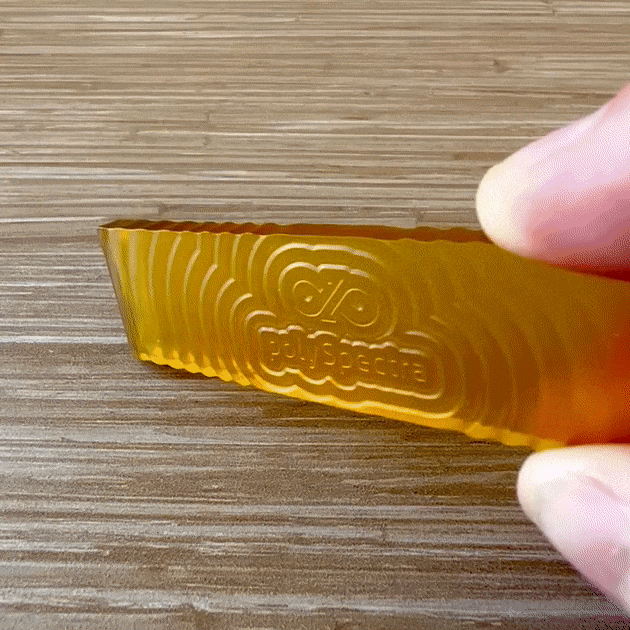Importance of Ductility in Photopolymer Resin 3D Printing, Stereolithography, Vat Photopolymerization, and Polymer Additive Manufacturing
Ductility is a key mechanical property that refers to a material’s ability to undergo significant plastic deformation before rupture. It is a measure of a material’s ability to withstand tensile stress, which is particularly important in applications where flexibility and the ability to absorb energy without breaking are required. In the context of photopolymer resin 3D printing, stereolithography, vat photopolymerization, and polymer additive manufacturing, ductility is crucial for ensuring the durability and functionality of printed parts, especially when they are subjected to mechanical loads.
The following sources have been identified as valuable for understanding the role of ductility in the aforementioned 3D printing processes. Each source is analyzed for its relevance, reliability, and significance to the research question.
Nature Article on PR-5CB Resins
Relevance: This article discusses the mechanical performance of 3D-printed samples using various photosensitive resins. It highlights the limitations of commercial photosensitive resins in terms of tensile strength and how the introduction of fillers to improve this often results in decreased toughness. The PR-5CB resins developed in the research show enhanced mechanical properties, including both tensile strength and toughness, which are indicative of improved ductility.
Reliability: Published in Nature, this source is highly reliable due to the journal’s rigorous peer-review process and reputation for high-quality scientific research.
Significance: The article is significant as it provides insight into the development of new resins that offer a balance between strength and ductility, which is a critical consideration in the design of 3D-printed parts. It also suggests that controlling printing resolutions can effectively enhance performance, which may be related to the ductility of the final product.
Springer Article on Acrylate Materials
Relevance: This review article explores the relationship between resin formulation, process parameters, and the final mechanical properties of 3D-printed acrylate materials. It emphasizes the importance of controlling the chemistry of the resin and the printing parameters to achieve desired mechanical properties, including ductility.
Reliability: The article is published in a peer-reviewed journal, ensuring that the content has been evaluated by experts in the field. This adds to the credibility of the information presented.
Significance: The source is significant as it provides a comprehensive overview of the factors that influence the mechanical properties of printed materials. Understanding these factors is essential for developing resins with improved ductility and other desirable characteristics.
ScienceDirect Article on Vat Photopolymerization
Relevance: This article reviews vat photopolymerization technology and its expansion into printing functional materials. It discusses the challenges associated with developing photopolymerizable functional resins and the curing mechanisms, which are directly related to the ductility of the printed parts.
Reliability: ScienceDirect is a well-known platform for scientific and technical research, and the article is likely peer-reviewed, adding to its reliability.
Significance: The source is significant as it provides a perspective on the evolution of vat photopolymerization and its potential for creating parts with specific mechanical properties, including ductility. It also highlights the importance of understanding the curing mechanisms to control the final properties of the printed objects.
NCBI Article on Photopolymerization Technologies
Relevance: This manuscript provides an overview of photopolymerization technologies in 3D printing, including stereolithography (SLA), digital light processing (DLP), and continuous digital light processing (CDLP). It also discusses the after-cured mechanical properties of light-curable resin materials, which are crucial for understanding ductility.
Reliability: The National Center for Biotechnology Information (NCBI) is a reputable source for biomedical literature, and the article is likely peer-reviewed.
Significance: The source is significant as it offers a broad understanding of the photopolymerization process and its impact on the mechanical properties of 3D-printed parts. It can inspire further research into developing materials with enhanced ductility.
Nature Article on High-Viscosity Resins
Relevance: This study formulates liquid crystal/photocurable resins suitable for stereolithography by integrating specific compounds with a photosensitive acrylic resin. It demonstrates that the orientation of the liquid crystal affects the polymerization of monomers or prepolymers, which in turn influences the ductility of the final product.
Reliability: As a Nature publication, this article is highly reliable due to the stringent peer-review process and the journal’s reputation in the scientific community.
Significance: The article is significant as it presents a novel approach to enhancing the mechanical properties, including ductility, of 3D-printed objects by manipulating the resin’s molecular structure. This could lead to the development of more robust and ductile 3D-printed parts.
NCBI Article on Additive Manufacturing of Polymers and Composites
Relevance: This review article discusses the advances in additive manufacturing processes for polymers and their composites, including the development of high-performance resins. It touches on the importance of material properties, such as ductility, in the context of additive manufacturing.
Reliability: Published by the NCBI, this source is considered reliable and is likely peer-reviewed.
Significance: The source is significant as it provides an overview of the current capabilities and limitations of additive manufacturing in terms of material properties. It highlights the need for further research into materials that offer improved ductility.
Conclusion
The importance of ductility in photopolymer resin 3D printing, stereolithography, vat photopolymerization, and polymer additive manufacturing cannot be overstated. Ductility ensures that printed parts can withstand mechanical stresses without failing, which is essential for many applications. The sources recommended in this report provide a comprehensive understanding of the factors that influence ductility in 3D-printed materials and offer insights into the development of new materials and processes that can enhance this property. Each source has been selected for its relevance, reliability, and significance to the research question, providing a solid foundation for further investigation into the role of ductility in 3D printing technologies.
